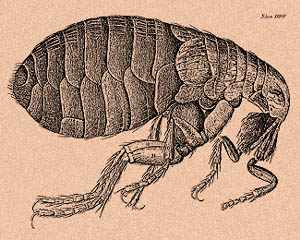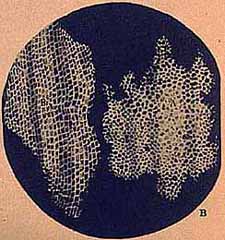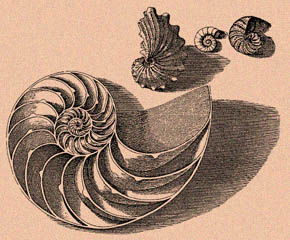No portrait survives of Robert Hooke. His name is somewhat obscure today, due in part to the enmity of his famous, influential, and extremely vindictive colleague, Sir Isaac Newton. Yet Hooke was perhaps the single greatest experimental scientist of the seventeenth century. His interests knew no bounds, ranging from physics and astronomy, to chemistry, biology, and geology, to architecture and naval technology; he collaborated or corresponded with scientists as diverse as Christian Huygens, Antony van Leeuwenhoek, Christopher Wren, Robert Boyle, and Isaac Newton. Among other accomplishments, he invented the universal joint, the iris diaphragm, and an early prototype of the respirator; invented the anchor escapement and the balance spring, which made more accurate clocks possible; served as Chief Surveyor and helped rebuild London after the Great Fire of 1666; worked out the correct theory of combustion; devised an equation describing elasticity that is still used today ("Hooke's Law"); assisted Robert Boyle in studying the physics of gases; invented or improved meteorological instruments such as the barometer, anemometer, and hygrometer; and so on. He was the type of scientist that was then called a virtuoso -- able to contribute findings of major importance in any field of science. It is not surprising that he made important contributions to biology and to paleontology.
Relatively little is known about Robert Hooke's life. He was born on July 18, 1635, at Freshwater, on the Isle of Wight, the son of a churchman. He was apparently largely educated at home by his father, although he also served an apprenticeship to an artist. He was able to enter Westminster School at the age of thirteen, and from there went to Oxford, where some of the best scientists in England were working at the time. Hooke impressed them with his skills at designing experiments and building equipment, and soon became an assistant to the chemist Robert Boyle. In 1662 Hooke was named Curator of Experiments of the newly formed Royal Society of London -- meaning that he was responsible for demonstrating new experiments at the Society's weekly meetings. He later became Gresham Professor of Geometry at Gresham College, London, where he had a set of rooms and where he lived for the rest of his life. His health deteriorated over the last decade of his life, although one of his biographers wrote that "He was of an active, restless, indefatigable Genius even almost to the last." He died in London on March 3, 1703.
Hooke's reputation in the history of biology largely rests on his book Micrographia, published in 1665. Hooke devised the compound microscope and illumination system shown above, one of the best such microscopes of his time, and used it in his demonstrations at the Royal Society's meetings. With it he observed organisms as diverse as insects, sponges, bryozoans, foraminifera, and bird feathers. Micrographia was an accurate and detailed record of his observations, illustrated with magnificent drawings, such as the flea shown below, which Hooke described as "adorn'd with a curiously polish'd suite of sable Armour, neatly jointed. . ." It was a best-seller of its day. Some readers ridiculed Hooke for paying attention to such trifling pursuits: a satirist of the time poked fun at him as "a Sot, that has spent 2000 £ in Microscopes, to find out the nature of Eels in Vinegar, Mites in Cheese, and the Blue of Plums which he has subtly found out to be living creatures." More complimentary was the reaction of the diarist and government official Samuel Pepys, who stayed up till 2:00 AM one night reading Micrographia, which he called "the most ingenious book that I ever read in my life."


Perhaps his most famous microscopical observation was his study of thin slices of cork, depicted above right. In "Observation XVIII" of the Micrographia, he wrote:
. . . I could exceedingly plainly perceive it to be all perforated and porous, much like a Honey-comb, but that the pores of it were not regular. . . . these pores, or cells, . . . were indeed the first microscopical pores I ever saw, and perhaps, that were ever seen, for I had not met with any Writer or Person, that had made any mention of them before this. . .
Hooke had discovered plant cells -- more precisely, what Hooke saw were the cell walls in cork tissue. In fact, it was Hooke who coined the term "cells": the boxlike cells of cork reminded him of the cells of a monastery. Hooke also reported seeing similar structures in wood and in other plants. In 1678, after Leeuwenhoek had written to the Royal Society with a report of discovering "little animals" -- bacteria and protozoa -- Hooke was asked by the Society to confirm Leeuwenhoek's findings. He successfully did so, thus paving the way for the wide acceptance of Leeuwenhoek's discoveries. Hooke noted that Leeuwenhoek's simple microscopes gave clearer images than his compound microscope, but found simple microscopes difficult to use: he called them "offensive to my eye" and complained that they "much strained and weakened the sight."
Hooke was also a keen observer of fossils and geology. While some fossils closely resemble living animals or plants, others do not -- because of their mode of preservation, because they are extinct, or because they represent living taxa which are undiscovered or poorly known. In the seventeenth century, a number of hypotheses had been proposed for the origin of fossils. One widely accepted theory, going back to Aristotle, stated that fossils were formed and grew within the Earth. A shaping force, or "extraordinary Plastick virtue," could thus create to stones that looked like living beings but were not. Hooke's contemporary, the naturalist and shell collector Martin Lister wrote in 1678 that "our English Quarry-shells were not cast in any Animal mold, whose species or race is yet to be found in being at this day." We would now interpret these fossils as belonging to extinct taxa, but extinction was not widely accepted at the time, and Lister concluded: "I am apt to think, there is no such matter, as Petrifying of Shells in the business. . . but that these Cockle-like shells ever were, as they are at present, lapides sui generis [stones of their own kind], and never any part of an Animal."
Hooke examined fossils with a microscope -- the first person to do so -- and noted close similarities between the structures of petrified wood and fossil shells on the one hand, and living wood and living mollusc shells on the other. In Micrographia he compared a piece of petrified wood with a piece of rotten oak wood, and concluded that
this petrify'd Wood having lain in some place where it was well soak'd with petrifying water (that is, such water as is well impregnated with stony and earthy particles) did by degrees separate abundance of stony particles from the permeating water, which stony particles, being by means of the fluid vehicle convey'd, not onely into the Microscopical pores. . . but also into the pores or Interstitia. . . of that part of the Wood, which through the Microscope, appears most solid. . .Hooke's language may be archaic, but his meaning is quite modern: Dead wood could be turned to stone by the action of water rich in dissolved minerals, which would deposit minerals throughout the wood. Hooke also concluded in Micrographiathat the shell-like fossils that he examined really were "the Shells of certain Shel-fishes, which, either by some Deluge, Inundation, earthquake, or some such other means, came to be thrown to that place, and there to be fill'd with some kind of Mud or Clay, or petrifying Water, or some other substance. . . "

Hooke's Discourse of Earthquakes, published two years after his death, shows that his geological reasoning had gone even further. Following in the footsteps of Leonardo da Vinci, Hooke explained the presence of fossil shells on mountains and in inland regions: "Most of those Inland Places. . . are, or have been heretofore under the Water. . . the Waters have been forc'd away from the Parts formerly cover'd, and many of those surfaces are now raised above the level of the Water's Surface many scores of Fathoms. It seems not improbable, that the tops of the highest and most considerable Mountains in the World have been under Water, and that they themselves most probably seem to have been the Effects of some very great Earthquake." Hooke continued to study fossils and compare them with living organisms -- the illustration above shows the coiled shells of three living cephalopods, Nautilus, Argonauta, and Spirula, compared with a fossil ammonite (upper right). He concluded that many fossils represented organisms that no longer existed on Earth: "There have been many other Species of Creatures in former Ages, of which we can find none at present; and that 'tis not unlikely also but that there may be divers new kinds now, which have not been from the beginning."
Hooke had grasped the cardinal principle of paleontology -- that fossils are not "sports of Nature," but remains of once-living organisms that can be used to help us understand the history of life. Hooke realized, two and a half centuries before Darwin, that the fossil record documents changes among the organisms on the planet, and that species have both appeared and gone extinct throughout the history of life on Earth. These questions of the nature of fossils and the possibility of extinction would continue to challenge natural scientists, from Edward Lhwyd and John Ray down to Jean-Baptiste Lamarck and Georges Cuvier.
A brief biography of Hooke, with a listing of his contributions to mathematics, is part of the resources in the history of mathematics maintained at the School of Mathematics of Trinity College, Dublin. A listing of Hooke's biographical data is available from the Galileo Project website. Somewhat more extensive information on Hooke's life and accomplishments is available in this biography, part of the History of Mathematics archive; and in the online essay "Seeing Further: The Legacy of Robert Hooke". There is also information about Hooke's contributions to microscopy in the thorough History of the Light Microscope pages.
